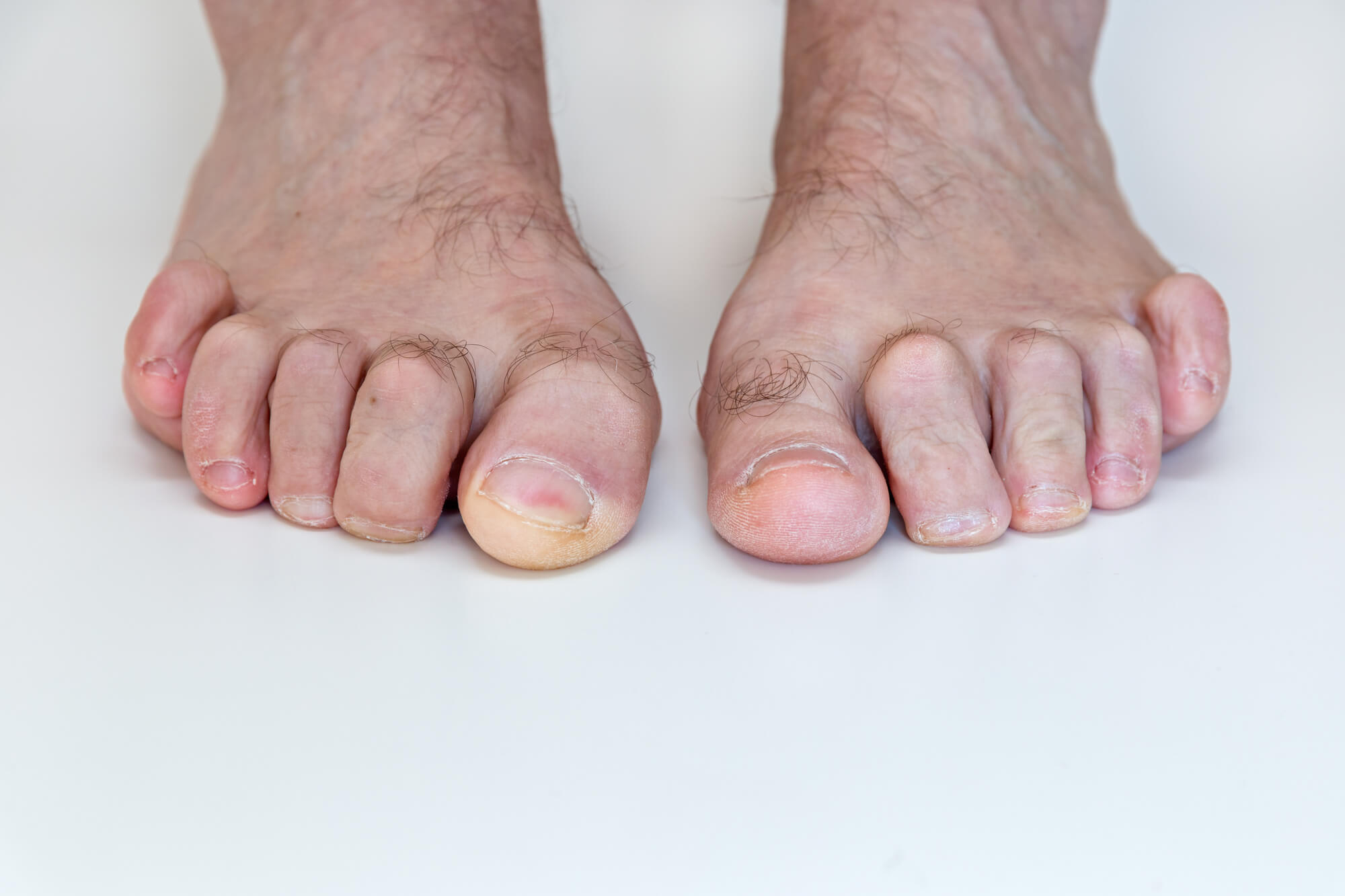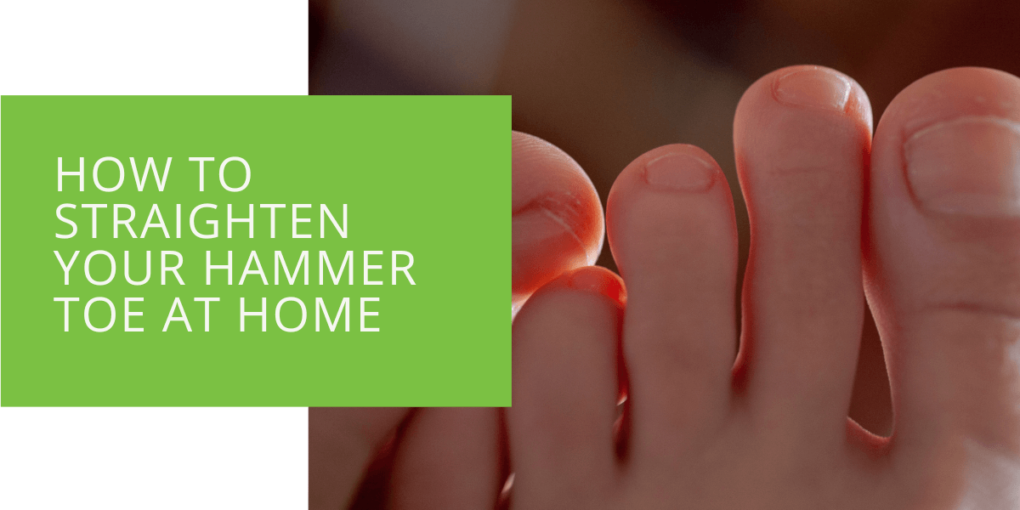How to Straighten Your Hammer Toe at Home
Hammer toe is a common foot condition that can cause discomfort and affect mobility. Fortunately, you can try effective non-surgical approaches at home to straighten your hammer toe and alleviate the associated symptoms. In this article, we will delve into the causes, symptoms, and complications of hammer toe and provide detailed guidance on various home treatment options.
Understanding Hammer Toe
What Is a Hammer Toe?
Hammer toe is a deformity that primarily affects the second, third, or fourth toe. It occurs when the toe joint becomes bent due to muscle imbalances and tendon irregularities. This leads to the toe bending in a hammer-like shape, causing discomfort and making it difficult to find suitable footwear.
Causes and Risk Factors
Several factors contribute to the development of hammer toe. These include wearing ill-fitting shoes, such as high heels or narrow-toed shoes, which can put excessive pressure on the toes. Risk factors include foot arch problems, genetic predisposition, arthritis, and toe injuries. Additionally, certain medical conditions like diabetes can increase the likelihood of developing hammer toe.
Symptoms and Complications
Hammer toe can cause various symptoms, including pain, stiffness, corns, calluses, and difficulty moving the affected toe. In some cases, the deformity can lead to secondary issues like the formation of bunions or difficulty in trimming toenails properly. If left untreated, hammer toe can worsen over time and impact your overall foot and ankle health.
Non-Surgical Approaches to Straighten Hammer Toes
Hammer toe is a condition that can be effectively managed without resorting to surgical intervention. There are several non-surgical approaches that you can try at home to help straighten your hammer toes and alleviate associated symptoms. These approaches aim to address the underlying muscle imbalances, promote flexibility, and relieve pain and discomfort. Here are some detailed methods you can incorporate into your home treatment plan:
Toe Exercises for Hammer Toes
Toe exercises are vital in strengthening the muscles and tendons surrounding the affected toe, improving flexibility, and gradually correcting the toe's alignment. Consider adding the following exercises to your routine:
- Marble Pickup Exercise: Place marbles on the floor and use your toes to pick them up one by one. This exercise helps improve toe dexterity and enhances the strength of the toe muscles.
- Toe Stretches: Gently stretch your toes by manually pulling them back and holding the stretch for a few seconds. Repeat this exercise multiple times daily to increase flexibility and reduce tension in the toe joints.
Stretching and Strengthening Exercises
In addition to toe exercises, stretching and strengthening exercises for the foot and toe muscles can significantly benefit straightening hammer toes. These exercises reduce muscle imbalances, improve overall foot alignment, and restore proper functioning. Here are a few exercises to consider:
- Toe Curls: Sit on a chair and place a small towel on the floor before you. Use your toes to grip and scrunch the towel toward you. Repeat this exercise for a few sets, gradually increasing the resistance using a thicker towel.
- Arch Strengthening: Stand barefoot and slowly rise onto your tiptoes, engaging your foot arches. Hold this position for a few seconds, then lower yourself back down. Repeat this exercise several times to strengthen the arches of your feet.
Footwear Modifications
Appropriate footwear is crucial in managing hammer toe and preventing further progression of the condition. Here are some modifications and considerations to keep in mind when choosing shoes:
- Wide Toe Box: Opt for shoes with a spacious toe box that allows your toes to move freely. This prevents unnecessary pressure and friction on the affected toes.
- Arch Support: Look for shoes with adequate arch support to promote proper foot alignment and reduce strain on the toe joints.
- Avoid High Heels and Pointed Shoes: Steer clear of high heels and shoes with narrow, pointed toe boxes. These types of footwear can exacerbate hammer toe by compressing the toes and causing further deformity.
Relief from Corns and Calluses
Corns and calluses often accompany hammer toe and can cause discomfort and pain. Managing and relieving these conditions is an essential aspect of non-surgical treatment. Consider the following strategies:
- Padding: Use over-the-counter toe pads or corn cushions to provide cushioning and reduce pressure on the corns or calluses.
- Moisturizers: Regularly apply moisturizers to the affected areas to keep the skin soft and prevent excessive dryness, which can lead to the development of calluses.
- Proper Trimming of Toenails: Trim your toenails carefully, avoiding rounded edges to prevent them from digging into adjacent toes and causing additional discomfort.
By implementing these non-surgical approaches into your daily routine, you can actively participate in straightening your hammer toes and improving your foot health.

Tips for Effective Home Treatment
While non-surgical approaches can be highly effective in managing hammer toe, it's essential to approach home treatment consistently and comprehensively. Here are some tips to maximize the effectiveness of your home treatment plan:
Consistency and Persistence
Consistency is key when it comes to home treatment for hammer toes. Make sure to incorporate the recommended exercises, stretches, and modifications into your daily routine. Consistently performing these activities will gradually improve muscle strength, flexibility, and toe alignment. It's important to be persistent and patient, as results may take time.
Monitoring and Progress Tracking
Keeping track of your symptoms and progress is crucial in determining the effectiveness of your home treatment methods. Monitor any changes in pain levels, toe flexibility, or alignment. Documenting these changes will help you assess the effectiveness of your approach and make necessary adjustments if needed. Consider creating a journal or using a tracking app to record your progress.
Lifestyle Adjustments
In addition to specific exercises and footwear modifications, certain lifestyle adjustments can further support your home treatment for hammer toe. These adjustments include:
- Maintaining a Healthy Weight: Excess weight strains your toes and feet, potentially exacerbating hammer toe. Maintaining a healthy weight can reduce pressure on the affected toes and improve overall foot health.
- Low-Impact Activities: Engaging in low-impact exercises, such as swimming or cycling, can help reduce stress on the toe joints while maintaining overall fitness. Avoid excessive strain on the toes, such as high-impact running or jumping.
- Choosing Appropriate Footwear: Beyond the earlier modifications, wearing appropriate shoes throughout the day is essential. Consider using arch support inserts or orthotics recommended by a podiatrist to provide additional comfort and stability.
When to Seek Professional Help
While home treatment can be effective, knowing when to seek professional help is important. If your hammer toe is causing severe pain, limits your mobility, or shows no improvement with home remedies, it's time to consult a podiatrist. A podiatrist can assess your condition, diagnose properly, and recommend suitable treatment options.
Schedule an Appointment with a Podiatrist
If you're experiencing persistent hammer toe symptoms or have concerns about your foot and toe health, scheduling an appointment with a podiatrist is advisable. A podiatrist specializes in diagnosing, treating, and managing foot conditions, including hammer toe. They can provide personalized guidance and offer advanced treatment options tailored to your needs.
Conclusion
Hammer toe is a common condition that can be effectively managed without surgery. By following the non-surgical approaches discussed in this article, such as toe exercises, footwear modifications, and seeking professional help, you can straighten your hammer toe, relieve discomfort, and improve the health of your feet and toes. Remember, early intervention and consistent home treatment are key to successful outcomes. Take control of your foot health and start implementing these strategies today.
Key Takeaways
- Non-surgical approaches can effectively straighten hammer toes, including toe exercises, stretching, and strengthening exercises, footwear modifications, and relief from corns and calluses.
- Consistency, persistence, and monitoring progress are crucial for successful home hammer toe treatment.
- Seeking professional help from a podiatrist is recommended for severe pain, worsening deformity, or complications that persist despite home treatment efforts.

